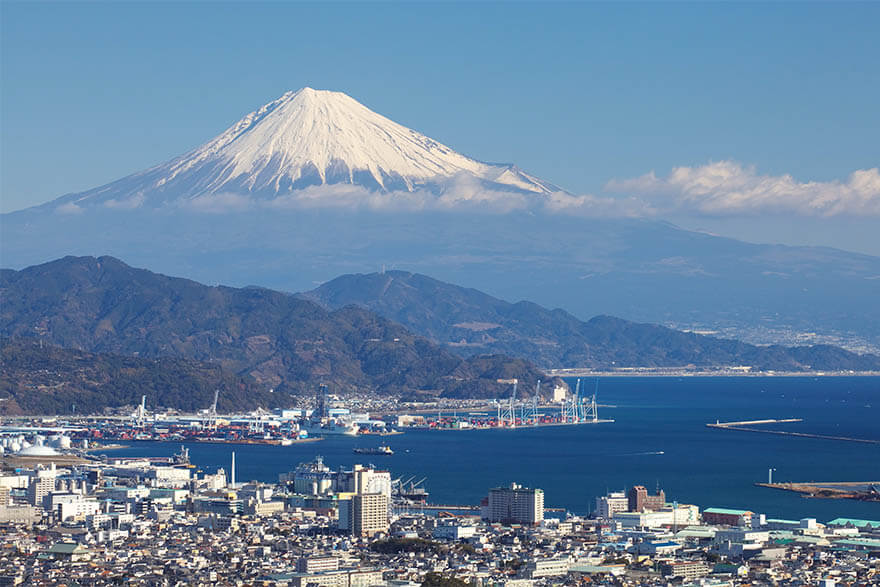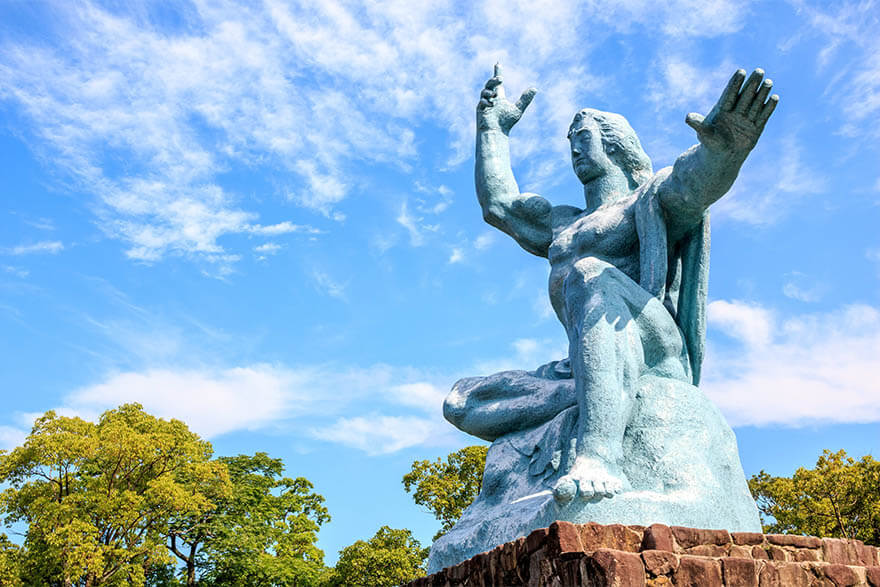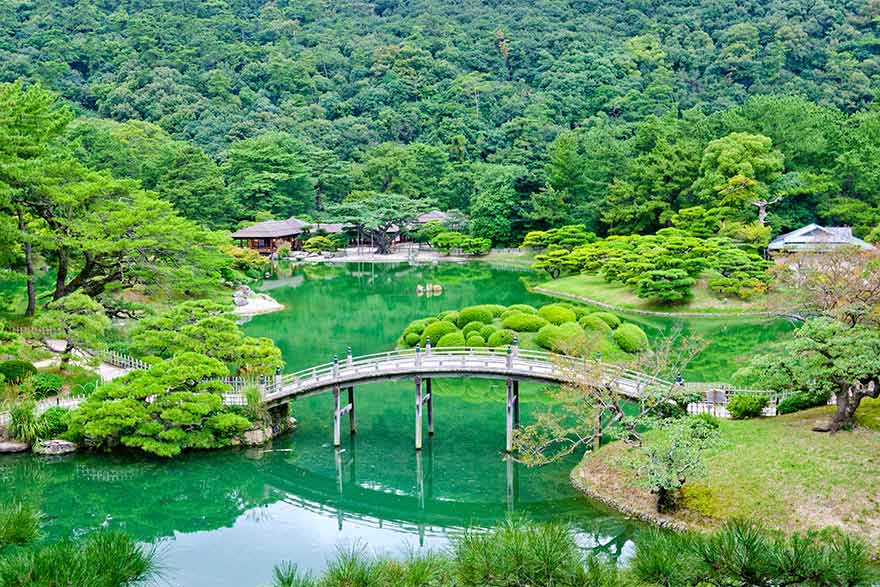Whether you’re visiting ancient shrines, sampling fresh sushi or exploring natural wonders, Windstar’s new Grand Japan itinerary, aboard Star Seeker in the fall of 2026, is designed to engage all of your senses. The 10-day cruise runs between Tokyo and Osaka/Kobe.
“One of Windstar’s most popular regions worldwide,” says Jess Peterson, itinerary planner for the company who works hand in hand with its destination team, “this voyage takes you to all of the places on your must-visit list.” These include Tokyo, Hiroshima, Nagasaki, Shimizu for Mt. Fuji and Kobe or Osaka for Kyoto. “Japan is such a rich destination, it’s also about the smaller, more out-of-the-way ports, too,” he says, noting that guests are often surprised and delighted by lesser-known places such as Kagoshima and Takamatsu and Korea’s Busan.
The itinerary is designed for travelers as a two-week trip where the 10-day sailing also offers a pre- or post-voyage stay in Kyoto for a more immersive experience there.
Where do we go? Here are highlights of Grand Japan.
Tokyo

From the Shiodome District’s futuristic skyscrapers to 15th century temples, Tokyo is truly the mecca of Japanese culture. Japan’s capital has more Michelin-starred restaurants than any other city in the world, and a handful of parks and gardens are tucked among the bustling streets and high rises. Hamarikyu Garden was originally built as a feudal lord’s residence during the Edo Period, and it’s known for having the only remaining tidal pond in the city. Another Tokyo landmark is the Imperial Palace, which is located on the original site of Edo Castle. After the shogunate was overthrown in 1868, thus ending the Edo period, Japan’s capital was moved from Kyoto to Tokyo, and Edo Castle became the Imperial family’s residence.
Osaka

Think of Osaka as the jumping-off port for Kyoto. Which isn’t to say there aren’t discoveries, here, too, in this city that serves as a home port. Osaka is most famous for its street food scene, and the city has a far more laid-back atmosphere than Tokyo. Osaka Castle, which was built in the late 16th century, is a main point of interest. After centuries of being demolished and rebuilt, the current structure was erected in 1931, the same year Osaka Castle Park was opened to the public. Sumiyoshi Taisha Shrine is another must-see spot, and it’s one of the oldest buildings in the country. Built in the 3rd century before the introduction of Buddhism, Sumiyoshi enshrines the kami, or Shinto gods, who protect travelers, fishermen and sailors.
Shimizu

With breathtaking views of Mount Fuji and Suruga Bay, Shimizu is considered one of the most beautiful ports in Japan. Nihondaira Park offers panoramic vistas of the region’s natural wonders, and the views from the aerial ropeway to the Kunozan Toshogu Shrine are equally jaw-dropping. Miho no Matsubara, a picturesque pine grove along the eastern coast of the Miho Peninsula, also features dramatic views of Mount Fuji, so there are no shortage of photo ops on this stop. Another highlight is Fujisan Hongu Sengen Taisha Shrine, which was originally built in the early 1600s. Though the shrine has been damaged by several earthquakes, the grounds are stunning, and with over 500 cherry trees on the property, it’s especially magical in the spring. Looking to eat local? Shimizu boasts one of the largest tuna catches in the country, and you’ll have the option to grab lunch at the city’s fish market, enjoying the freshest sashimi. Another option is a traditional tea ceremony at a chashitsu, or historic tearoom, in Yui Honjin Park.
Shingu

Shingu translates to “new shrine” in Japanese, and it refers to Kumano Hayatama Taisha, one of the three grand shrines of Kumano. For over 1,000 years, pilgrims have traveled to the Kumano region to pray at the three shrines, which also include Kumano Nachi Taisha and Kumano Hongu Taisha. The Kumano Kodo Pilgrimage Trails, which cross through the southern Kansai region, are just one of two pilgrimage sites in the world recognized by UNESCO. Consider making the quick trek to Nachi Falls, which, at 436 feet, is the tallest waterfall in Japan. It’s near the namesake Nachi shrine, and the falls are considered the original religious site in the area. Doro Gorge (Dorokyo) is yet another one of Shingu’s natural wonders to add to the list. You can hop on a jet boat for a 90-minute cruise through the gorge, which is located on the Kitayama-gawa River. The gorge is famous for its steep cliffs, clear emerald waters and rock formations.
Kagoshima

Kagoshima is best known for Sakurajima, an active volcano sitting in the middle of Kagoshima Bay. Once an isolated island in the bay, Sakurajima became connected to the Osumi Peninsula after an eruption in 1914. You can board a ferry to Sakurajima and explore the lava fields, and take in the views of the 3,665-foot stratovolcano at the Arimura Lava Observatory. On the ferry ride back to Kagoshima, stop by a local hot spring and enjoy the views — and a relaxing ashiyu, or foot bath. You may also decide to visit Senganen, a stunning garden with gorgeous views of the bay and volcano. Senganen, which was once the summer villa of the Shimazu clan, features a bamboo grove and a cascading waterfall. Another powerful place in Kagoshima is the Chiran Peace Museum, which honors the stories of kamikaze pilots during World War II.
Karatsu

Karatsu Castle is the main attraction in this coastal city, and it can be seen from across Karatsu Bay. The five-story structure was first built in 1608, but it was torn down during the Meiji Restoration in the late 19th century. In 1966 a replica was constructed in the style of the original castle. Another worthwhile stop is Mount Kagami, which features panoramic views of the bay, the city and the neighboring pine tree forest. The city is also known for the Karatsu Kunchi Festival, a three-day float parade that takes place every November. Fourteen Hikiyama floats are hauled through the streets to celebrate the harvest, and participants often dress in Edo-period attire. The floats, which have a UNESCO Intangible Cultural Heritage designation, can be viewed at the Hikiyama Exhibition Hall.
Busan, South Korea

Busan is the second largest city in South Korea, famous for its picturesque beaches and ornate temples. Take in views of Mount Geumjeongsan before visiting the 1,300-year-old Beomeosa Temple, or tour the Tongdosa Temple, which is believed to house several relics of Buddha. Another highlight is the full-day tour of Gyeongju, a UNESCO World Heritage Site often referred to as the “museum without walls.” Looking for sweeping vistas on the water? Step onto the Oryukdo Skywalk, a cantilevered observation deck with a glass floor above the ocean. The Oryukdo Skywalk juts out from a 115-foot cliff, and on clear days, you might be lucky enough to see Tsushima Island. Or, explore the equally impressive Songdo Skywalk, a winding pedestrian bridge connecting Songdo Beach to Geobukseon Island. You’ll also have the opportunity to visit the Busan International Film Festival Square and the nearby Jagalchi Fish Market.
Nagasaki

Nagasaki is home to the Atomic Bomb Museum and the Nagasaki Peace Park, memorializing the destruction by the second of two atomic bombs dropped on Japan during World War II. Remains of the Urakami Cathedral, which was once the largest church in Asia, can also be seen from the Peace Park. The Inasayama Observation Deck offers phenomenal views of the city, and another point of interest is Dejima Island, which was built in 1636. For over two centuries, this artificial island served as the primary outpost for foreign trade and cultural exchange, and it was the only Japanese territory open to Westerners. For those looking to venture beyond Nagasaki, consider taking a day trip to Arita, a scenic two-hour drive north of Nagasaki, recognized as the birthplace of Japanese ceramics. One other highlight of your call here is a sunrise “scenic” cruising past the deserted island of Hashima. Once an offshore mining facility (it’s about eight nautical miles from the center of Nagasaki), James Bond’s Skyfall was filmed in this eerie place.
Hiroshima

The Hiroshima Peace Memorial, also known as the Atom Bomb Dome, was the only structure left standing in the city after the U.S. dropped the first of two atomic bombs in 1945. Declared a UNESCO World Heritage Site in 1996, the park has many more memorials and monuments, along with a museum that covers the history of Hiroshima and the advent of the nuclear bomb. Another highlight is Itsukushima Shrine, which is a one of the most photographed landmarks in Japan. The shrine and torii gate are built over the water on Miyajima Island, and at high tide they appear to float on the Seto Inland Sea. The shrine, which is a UNESCO World Heritage Site, was built in 593 B.C., during the reign of Empress Suiko.
Takamatsu

Takamatsu is located on Shikoku Island, and the port city offers access to several smaller islands in the Seto Inland Sea. One of the top attractions is Ritsurin Garden, which was awarded three stars in the Michelin Green Guide Japan. The 185-acre garden is considered one of the most beautiful parks in the country, and it features six ponds, a waterfall, a bamboo forest and a tea house. Takamatsu is also known for its soy sauce production and Udon noodles. Foodies seeking a hands-on culinary experience will want to sign up for the noodle-making class at Nakano Udon School. After learning about the history of the dish and walking on the wheat dough, you’ll enjoy a steaming bowl of the thick, tasty noodles.
Kyoto

On this itinerary, Kyoto, which most beautifully celebrates Japan’s past, is available as a two night, three day pre- or post-cruise immersive experience from the ports of Kobe and Osaka.. Home to some 17 UNESCO World Cultural Heritage Sites, it has more than 2,000 temples and shrines. Kyoto was the country’s capital city for decades, and preserved are key historic sites such as its Imperial Palace, Nijo Castle, the bustling cobblestone alleys of Gion, and the Zen garden of Ryoan-ji Temple.
Editor’s Note: For more details on Windstar’s new Grand Japan voyage on Star Seeker, click here.


















































